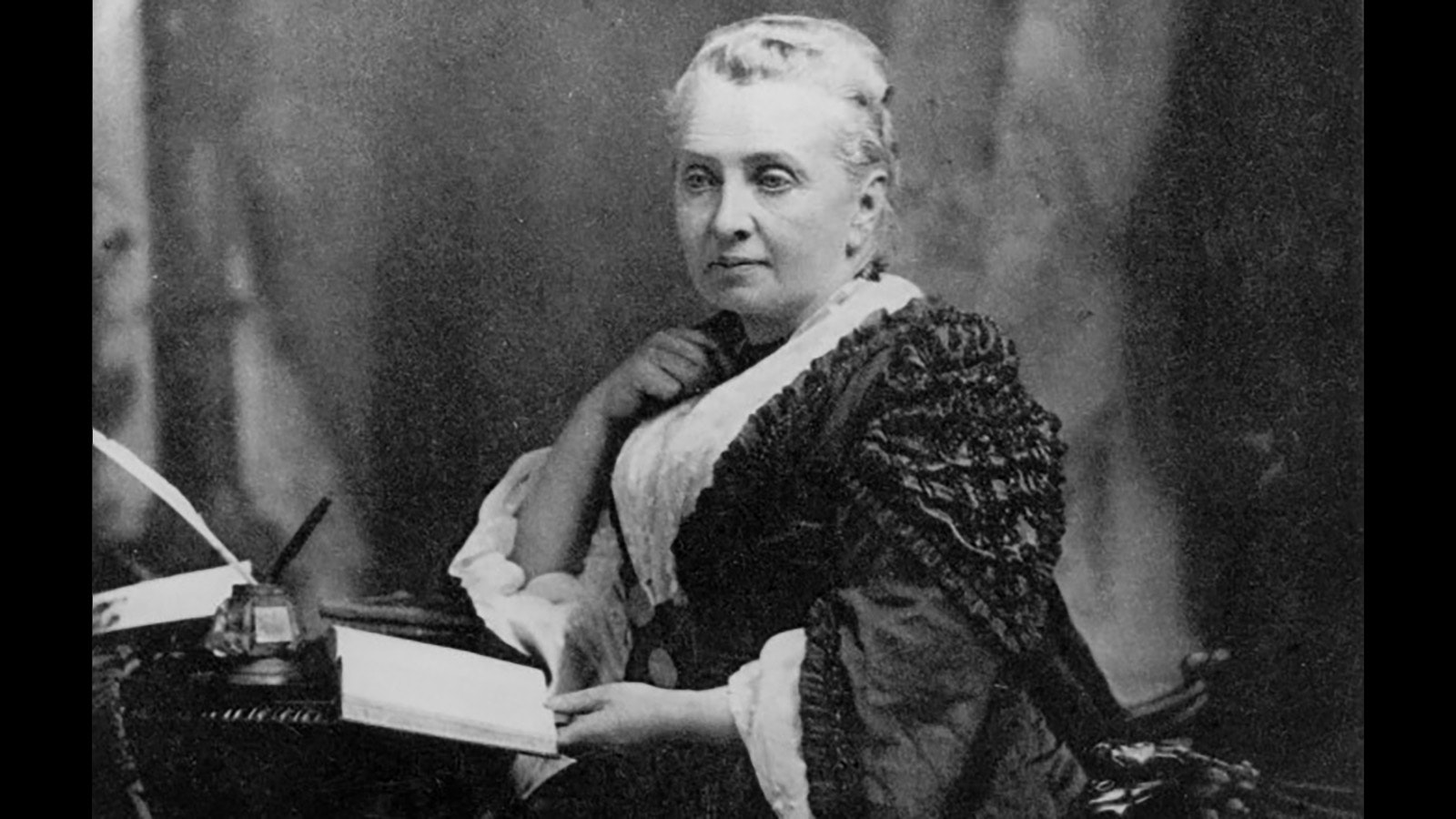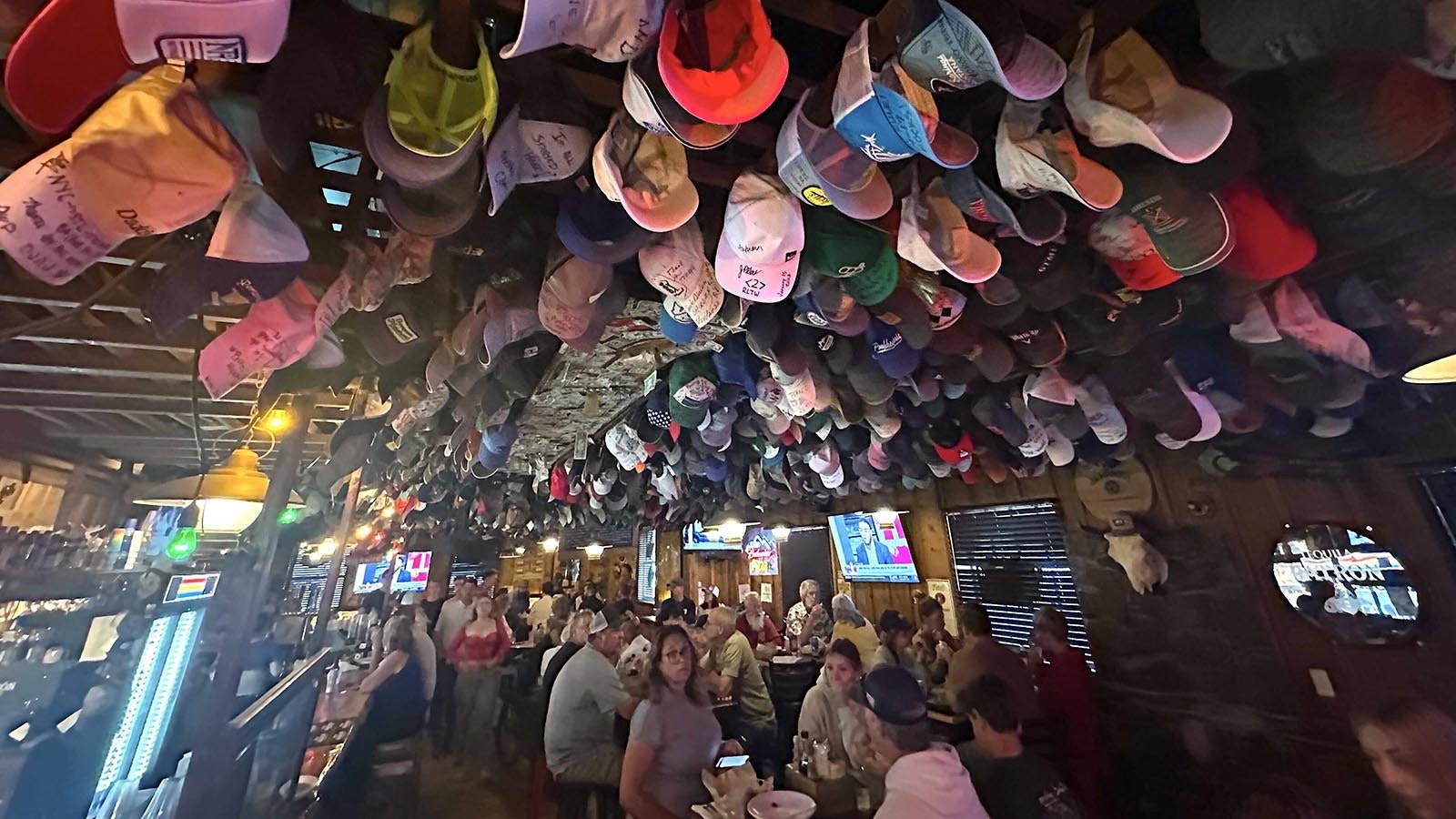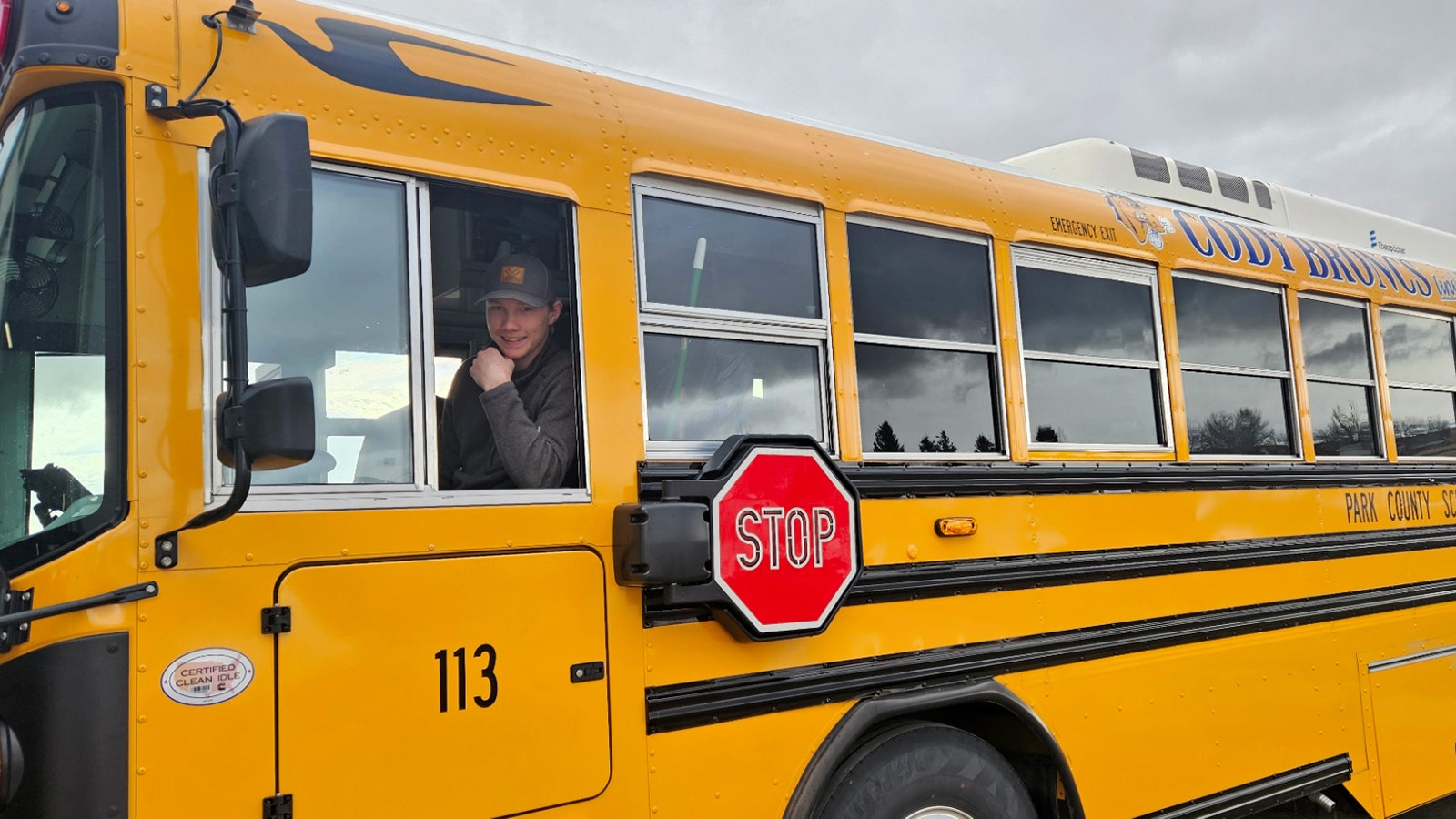Wyoming wasn’t yet a state, nor was Colorado, when Isabella Bird dropped by Cheyenne in 1873 on a Union Pacific train, right in the midst of a cholera outbreak.
Prescribed travel for her health, Bird would stay in Cheyenne just long enough to help out a mother with a newborn baby, hiring a young woman to look after them. She was on her way to seek the healthy atmosphere of the Rocky Mountains, as well as adventure. There, she would also have an unlikely romance with a one-eyed desperado and write a book that would make her an international bestselling author.
“A Ladies Life in the Rockies,” would actually be her fourth book, but it was the bestselling and most popular of all the books she wrote. And it’s still in print.
That book would not only set Bird up for a life of travel, but would help put Estes Park on the map before it held anything more than a few squatters and seasonal hunters.
The story Bird writes as Estes Park’s first tourist is laced with hints of the unlikely romance between herself, a straight-laced Victorian woman, and the one-eyed scoundrel named Rocky Mountain Jim.
It has become an enduring legend of the American West, which turns 150 years old this year.
Infamous Outlaw
Jim Nugent was so infamous at the time Bird met him that mothers were known to warn naughty children to behave, or they’d leave them for Rocky Mountain Jim.
The bandit was so wicked, he was said to come down the mountains once a month to steal naughty children away for his supper.
But that’s not the man Isabella Bird met. Nugent could be quite gentle and kind, despite his reputation, Bird wrote.
And while he had lost an eye to a grizzly bear encounter and that side of his face was terribly “repulsive,” the other side looked as though it could have been “modeled in marble,” Bird wrote. His “tawny ringlets” cascaded down from hat to shoulders — a figure at once beautiful and tragic.
He was a man with two faces — one terrible and the other as lovely and handsome as could be. Likewise, his manners. While sober, he was as courteous as a gentleman could be.
On their first meeting, Jim charmed Bird by offering her water in a homely little tin, then apologizing so graciously that he had nothing better to offer a lady such as herself.
The top of Jim’s mud-roofed, black log cabin was draped with all manner of drying furs, and the horns and antlers of animals were lying all about. A partial deer carcass hung at one end of the cabin, while in the entry rested a recently skinned beaver carcass.
It looked like some wild beast’s den rather than the home of a man.
But, Isabella wrote, “As he spoke, I forgot both his reputations and appearance, for his manner was that of a chivalrous gentleman, his account refined, and his language was easy and elegant. I inquired about some beavers’ paws which were drying, and, in a moment, they hung on the horn of my saddle.”
The two talked until the sun began to sink in the sky. Then, as Isabella and the two young men she was traveling with — hired hands for their host, Griffith Evans — were riding away, Jim asked to call on her while she was in Estes Park.
Bird does not write what she said in reply, but she clearly did not deny him.
In fact, the two were often seen riding together in Estes Park. And, when she became taken with the idea of climbing Long’s Peak, it was to Rocky Mountain Jim she turned.

Reaching A New Height
Long’s Peak is 14,259 feet high, dwarfing all the other mountains around it. It never failed to capture Bird’s eye as she went about her days in Estes Park.
“From it came all storms of snow and wind,” she wrote, “and the forked lightnings play round its head like a glory. It is one of the noblest of mountains, but in one’s imagination it grows to be much more than a mountain. It becomes invested in a personality. In its caverns and abysses, one comes to fancy that it generates and chains the strong winds, to let them loose in its fury. The thunder becomes its voice, and the lightnings do it homage. Other summits blush under the morning kiss of the sun and turn pale the next moment, but it details the first sunlight and holds it round its head for an hour at least, till it pleases to change from rosy red to deep blue; and the sunset, as if spellbound lingers upon its crest.”
Isabella’s host, Griffith Evans, didn’t think much of Bird’s idea of climbing Long’s Peak. It’s too late in the year, he told her, and will be too windy.
But ultimately the weather “settled,” and plans were made for Bird to climb — just to the tree line, Evans advised, and no more.
Rocky Mountain Jim agreed to be Isabella’s guide, along with the two new hired hands who had been with her when she first came to Estes Park and met Jim.
During the climb, Bird writes that she and Jim talked for hours, and she again forgot that he was a man with “desperado” written all over him.
“Treat Jim as a gentleman and you’ll find him one,” Bird wrote. “Though his manner was certainly bolder and freer than that of a gentleman generally, no imaginary fault could be found. He was very agreeable as a man of culture, as well as a child of nature; the desperado was altogether out of sight.”
To The Very Top
In the evenings, Jim would have his dog watch over Bird and keep her warm as she slept.
“Ring,” he would tell the dog. “Go to that lady and don’t leave her again tonight.”
The dog would do just that, as if it had perfectly understood Jim’s words.
Their journey to the tree line was of no difficulty, Bird writes. But once they reached the Notch, real mountaineering was required. A 2,000-foot-tall solid rock wall rose ahead of them, and Bird was wearing borrowed shoes too large for her feet.
In their day and age, there were no modern mountaineering inventions. Climbers used their hands, possibly gloved, and their feet, to shinny up crevices. But here, melted snow, refrozen several times, painted every mountain crack and crevice that could have served as a foothold with treachery. Many rocks, meanwhile, that appeared solid were false to the foot.
First, they tried roping Bird to Jim, but in the oversize boots she couldn’t keep her footing.
She knew this was hazardous to the party. She and the two hired hands suggested she should simply stay at the Notch while they went on.
But Jim was not having that. He had no reason to go up the mountain at all, he told the young men, if not to show Bird its top.
Up she would go — even if he had to carry her there. And carry her he did for the very last of the journey like “a bale of hay,” Bird would later write after the journey had been made.
“On the worst part of the climb, one slip and a breathing, thinking, human being would lie 3,000 feet below, a shapeless, bloody heap,” she wrote.
But once on the summit, she was entranced to see all the views she’d seen before spread out below.
“It was something at last to stand upon the storm-rent crown of this lonely sentinel of the Rocky Range, on one of the mightiest vertebrae of the backbone of the North American continent, and to see the waters start for both oceans,” she wrote. “Uplifted above love and hate and storms of passion, calm amidst the eternal silences, fanned by zephyrs and bathed in living blue, peace rested for that one bright day on the peak.”
The party could not stay long, however. The rarefied air had caused one of the young men’s lungs to start bleeding, Bird wrote. They placed their names on a paper inside a small tin, along with the date of their ascent, and began a long journey home.
The Path Not Taken
The way down was not any less treacherous than the way up. They were by this time quite dehydrated, as the dry ice and snow all around them did not provide much in the way of real moisture.
There were many falls and bruises along the way, as they climbed and slid down nearly 5,000 feet of icy snowy boulders.
“I had various falls and once hung by my frock, which caught on a rock, and ‘Jim’ severed it with his hunting knife, upon which, I fell into a crevice of soft snow,” Bird wrote.
They had to descend lower than planned, owing to impassable tracts of ice, then walk back up around 200 feet to get on the right trail home.
“Sometimes I drew myself up on hands and knees, sometimes crawled,” Bird wrote. “Sometimes Jim pulled me up by my arms or a lariat, and sometimes I stood on his shoulders, or he made steps for me of his feet and hands, but at six we stood on the ‘Notch’ in the splendor of the sinking sun, all color deepening, all peaks glorifying, all shadows purpling, all peril past.”
That night, around the campfire while the other two young men were sleeping, Jim told her stories of his early youth. He also told her of the great sorrow that led him to embark on a lawless and desperate life, which led him to that moment in time with her in Estes Park.
“His voice trembled, and tears rolled down his cheek,” Bird writes. “Was it semi-conscious acting, I wondered, or was his dark soul really stirred to its depths by the silence, the beauty and the memories of youth?”
Once home, Bird wrote that she would never trade her memories of the “perfect beauty” or the “sublimity” of the experience for mountaineering anywhere else in the world.
Her summit had been just in time, too. Snow had begun falling on the summit, and the mountain top would not be accessible again for at least eight months — long after Isabella would have already gone home.
Whiskey Is The True Master
In Bird’s finished work, “A Ladies Life in the Rockies,” she never mentions that Jim eventually told her he loved her. It is only in her original letters to her sister that this revelation is shared.
A woman in Victorian times had to be careful of her reputation, and Isabella no less, for all that she was a published author.
Even in her letters, which she knew would be viewed by others and passed about, she is certain to say that she told Jim they had no future together and that she ended the relationship.
But they did continue talking and riding together, a fact which is also mentioned in her book. Also mentioned is that Bird asked Jim if he could give up whiskey.
But whiskey was the only thing that gave him any pleasure, Jim told her, and he could not give it up. Not any more.
Perhaps he could have once, he told her, but now? It was too late for him.
A Promise Kept
As Bird was taking her leave of Estes Park, it was once again Rocky Mountain Jim who escorted her through the dangerous winter safely to the train that would take her away, to a boat that would take her home.
But as she was leaving, Jim made her a strange promise. He told her she would see him again on the day he died.
In her letters, Bird does go so far as to wonder what might have been if whiskey had not been Jim’s true master — though she also implores her sister to never let anyone think she’d fallen for Rocky Mountain Jim.
Jim Nugent died within the year after Bird left Estes Park, shot by her host Griffith Evans as he rode past the man’s cabin. Nugent did not die right away, but lingered for months with a bullet in his brain.
In his complaint, he swore that Evans had attacked him unprovoked because he wouldn’t sell his land to Lord Dunraven. The nobleman had been buying up thousands of acres of land to make all of Estes Park his private hunting reserve, something Nugent opposed.
Bird, in her letters, tells a strange tale.
On the day that Nugent died, she looked up from her writing and saw him standing at the foot of her bed.
He waved goodbye to her, and the apparition disappeared. Jim had kept his promise to Bird.
Bird would later marry the doctor who had first prescribed travel for her health, but she never forgot her time in the American West, where she met a desperado named Rocky Mountain Jim.
Despite his lack of one eye and the dependence on alcohol that made him like two different men, he was as perceptive as any man when it came to people, and to Bird in particular.
Renee Jean can be reached at: Renee@CowboyStateDaily.com




